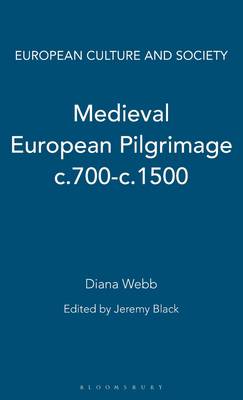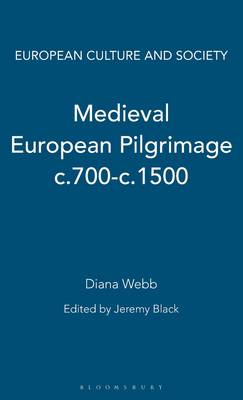
Je cadeautjes zeker op tijd in huis hebben voor de feestdagen? Kom langs in onze winkels en vind het perfecte geschenk!
- Afhalen na 1 uur in een winkel met voorraad
- Gratis thuislevering in België vanaf € 30
- Ruim aanbod met 7 miljoen producten
Je cadeautjes zeker op tijd in huis hebben voor de feestdagen? Kom langs in onze winkels en vind het perfecte geschenk!
- Afhalen na 1 uur in een winkel met voorraad
- Gratis thuislevering in België vanaf € 30
- Ruim aanbod met 7 miljoen producten
Zoeken
Omschrijving
Medieval pilgrimage was, above all, an expression of religious faith, but this was not its only aspect. Men and women of all classes went on pilgrimage for a variety of reasons, sometimes by choice, sometimes involuntarily. They made both long and short journeys: to Rome, Jerusalem and Santiago on the one hand; to innumerable local shrines on the other. The routes that they followed by land and water made up a complex web which covered the face of Europe, and their travels required a range of support services, including the protection of rulers (who were themselves often pilgrims). Pilgrimage left its mark not only on the landscape but also on the art and literature of Europe.
Diana Webb's engaging book offers the reader a fresh introduction to the history of European Christian pilgrimage in the twelve hundred years between the conversion of Emperor Constantine and the beginnings of the Protestant Reformation. As well as exploring this multi-faceted activity, it considers both the geography of pilgrimage and its significant cultural legacy.
Diana Webb's engaging book offers the reader a fresh introduction to the history of European Christian pilgrimage in the twelve hundred years between the conversion of Emperor Constantine and the beginnings of the Protestant Reformation. As well as exploring this multi-faceted activity, it considers both the geography of pilgrimage and its significant cultural legacy.
Specificaties
Betrokkenen
- Auteur(s):
- Uitgeverij:
Inhoud
- Aantal bladzijden:
- 201
- Taal:
- Engels
- Reeks:
- Reeksnummer:
- nr. 18
Eigenschappen
- Productcode (EAN):
- 9780333762592
- Verschijningsdatum:
- 30/05/2002
- Uitvoering:
- Hardcover
- Formaat:
- Genaaid
- Afmetingen:
- 148 mm x 223 mm
- Gewicht:
- 394 g

Alleen bij Standaard Boekhandel
+ 593 punten op je klantenkaart van Standaard Boekhandel
Beoordelingen
We publiceren alleen reviews die voldoen aan de voorwaarden voor reviews. Bekijk onze voorwaarden voor reviews.









